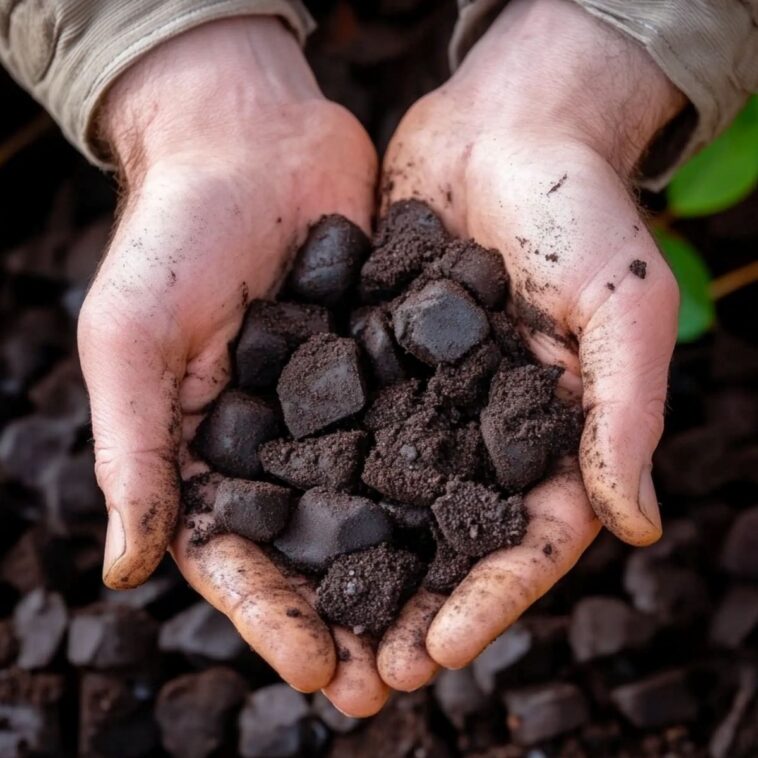Curious about composting coffee grounds? These are the remnants of coffee beans left behind after brewing, and many wonder if they’re beneficial for compost. Composting is an eco-friendly way to reduce food waste, offering a greener alternative to traditional recycling.
By composting organic materials like kitchen scraps and yard debris, you create nutrient-rich compost to use in your garden or for potted plants. So, are coffee grounds compostable? Absolutely! They’re an ideal addition to your compost pile, enhancing its quality and providing essential nutrients to boost plant health.
Although often discarded, coffee grounds still contain valuable nutrients that aid plant growth, flowering, and fruit production. Learn how to incorporate coffee grounds into your compost bin or pile to reduce kitchen waste and improve the richness of your compost.
Are Coffee Grounds Compostable?
Yes, coffee grounds are fully compostable and a great way to enrich your compost pile while reducing food waste in landfills. Many gardeners want to know if coffee grounds are good for compost, and the answer is a resounding yes. Coffee grounds improve the texture, structure, and nutritional value of compost, making them beneficial for both native and potting soils.
Benefits of Coffee Grounds in Compost
Coffee grounds are rich in nutrients, making them an excellent addition to any compost pile. Whether you collect them from your daily brew or get them from a coffee shop, adding coffee grounds to compost helps improve soil health and plant growth.
Key Nutrients in Coffee Grounds:
- Iron
- Calcium
- Magnesium
- Nitrogen
- Potassium
- Phosphorus
These nutrients help create a well-balanced compost that nourishes your plants and supports their growth.
How Does Composting Work?
Composting involves breaking down organic materials into a rich, nutrient-dense product that acts as an organic fertilizer. It requires a balance of “green” materials, like fresh kitchen scraps and yard waste, and “brown” materials, such as dried leaves, cardboard, or straw.
To maintain a healthy compost pile, aim for a 1:3 ratio of green to brown materials, and turn or tumble the pile regularly to ensure proper aeration and decomposition.
How to Compost Coffee Grounds at Home
Once your compost bin or pile is established, composting coffee grounds is straightforward. After brewing your coffee, simply remove the grounds from the filter and add them to the compost pile. Be sure to check if your coffee filters are compostable, as some may not break down easily.
Since coffee grounds are rich in nitrogen, they fall under the green material category in composting. To maintain balance, combine them with sufficient brown materials, like shredded paper or dried leaves. It’s important not to exceed 20% of the total compost volume with coffee grounds, as too much can slow the decomposition process.
Composting Methods for Coffee Grounds
If you’re new to composting, you’ll first need to decide on a method. The space available and the amount of organic waste you generate will determine the best approach for your composting needs.
Popular Composting Methods:
- Compost pile
- Compost bin
- Compost tumbler
- Worm bin
- Compost machine
Compost piles and large bins are ideal for outdoor spaces, while smaller bins, tumblers, and worm bins work well for apartments or small gardens. Worm bins, in particular, speed up the decomposition process with the help of earthworms, though they require extra care.
The Benefits of Finished Coffee Ground Compost
Once your compost is fully broken down, it becomes an excellent organic fertilizer, rich in nutrients that promote plant growth and support flowering and fruiting. Coffee compost improves soil structure and helps retain moisture, enhancing overall soil health.
For gardeners growing acid-loving plants like blueberries, tomatoes, strawberries, or azaleas, coffee compost is ideal because it doesn’t alter soil pH. This makes it a safe choice for plants that need specific pH conditions to thrive.
Other Uses for Coffee Grounds in the Garden
If you have more coffee grounds than you can compost, don’t worry—there are plenty of other ways to use them in the garden. Coffee grounds make an excellent mulch, helping retain moisture in garden beds and providing a slow-release source of nutrients as they break down.
As mulch, coffee grounds create a protective layer that reduces evaporation and feeds plants over time. Earthworms also love coffee grounds and help integrate them into the soil, creating air pockets around plant roots and improving soil structure.
Coffee grounds also serve as a natural pest deterrent. They help repel slugs and snails, much like crushed eggshells, reducing the need for chemical pesticides.
To use coffee grounds as mulch, simply spread a thin layer (about an inch thick) around the base of your plants. Coffee grounds are especially beneficial for vegetables like carrots, squash, and cauliflower, and they can even help tomato plants grow larger and faster than usual.
The Eco-Friendly Benefits of Coffee Grounds
As sustainable gardening continues to grow in popularity, more gardeners are turning to organic materials like coffee grounds to improve their compost. Whether you’re composting coffee grounds or using them as mulch, this natural waste product provides numerous benefits to your garden without introducing harmful chemicals.
Unlike synthetic fertilizers, compost made from coffee grounds won’t harm beneficial insects or wildlife. Instead of discarding your used coffee grounds, repurpose them in your compost pile or garden to create a more sustainable, eco-friendly growing environment.
Whether you’re a daily coffee drinker or have access to used grounds from a local café, incorporating coffee grounds into your compost or garden is an excellent way to enrich your soil, reduce waste, and promote healthy plant growth.


